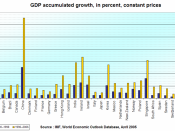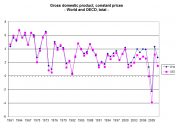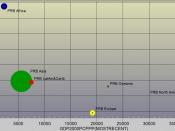Classification of the Economy
Germany is a huge economy sitting right in the middle of eastern and western Europe with a population of 82.4 million at last estimate in July of 2003, and a land area of 357,021 square kilometres. Germany is classified as a mixed market economy, with most of the decisions left to the free market, but still regulated to ensure competition by the government. Germany has a parliamentary system of government made up by a civil law system with indigenous concepts, and a judicial review of legislative acts in the Federal Constitutional Court.
Germany is classified by the World Bank as an advanced industrialised or developed economy because with a GNI of $1.94 trillion in Purchasing Power Parity terms, and a per capita income of $23,302.8 in GNI terms, ranking it 3rd in the world in this category.
Australia on the other hand is a small open economy sitting in the south pacific with a population of 20 million at most recent estimate and a land area of 7682 square kilometres.
Australia is also classified as a mixed market economy thanks to its free market decisions that are still policed by the government in order to encourage competition in the market. Australia has a parliamentary system of government based on the Westminster system of parliamentary democracy.
Australia is also classified by the World Bank as an advanced industrialised or developed economy because with a GNI of $487 billion in Purchasing Power Parity terms, its per capita income is $25 370 dollars in GNI terms, ranking it 14th in the world.
Economic Growth
Germany has the world's fifth largest GDP, almost five times larger than the Australian one, yet its growth rate has been by far the lowest of the established economic powers. In 2003, Germany's GDP was...


